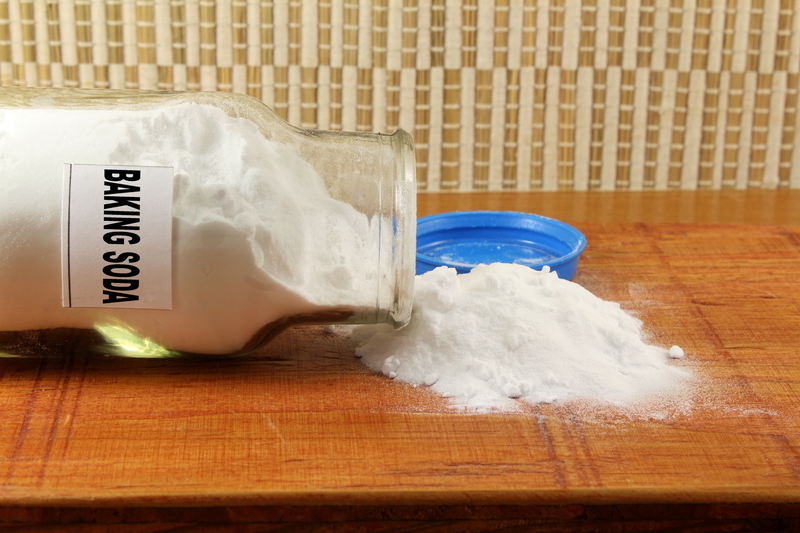Clarity on Cleanliness: How to Wash Sofa Covers with Care
Posted on 21/06/2025
Clarity on Cleanliness: How to Wash Sofa Covers with Care
Keeping your sofa clean is essential not only for hygiene but also for maintaining the beauty and longevity of your furniture. Over time, sofa covers accumulate dirt, spills, pet hair, and allergens. Regular cleaning is vital--but how exactly should you wash sofa covers without causing damage or fading? In this comprehensive guide, we'll provide expert advice on how to wash sofa covers with care, ensuring that your living spaces remain fresh, inviting, and stylish.
Table of Contents
- Why It's Important to Clean Sofa Covers Regularly
- Understanding Different Sofa Cover Materials
- Reading and Interpreting Care Labels
- Preparing Sofa Covers for Washing
- How to Wash Sofa Covers in the Washing Machine
- Hand-Washing Sofa Covers: Gentle Techniques
- Proper Drying Techniques for Sofa Covers
- Dealing with Tough Stains and Spot Cleaning
- Common Mistakes to Avoid When Cleaning Sofa Covers
- Tips for Maintaining Clean Sofa Covers
- FAQs About Washing Sofa Covers
- Conclusion: Prolong Sofa Life with Careful Cleaning
Why It's Important to Clean Sofa Covers Regularly
Sofas are often at the heart of our homes--places where we relax, entertain guests, and even eat snacks. Because of their constant use, sofa covers can harbor dust, bacteria, spills, and unpleasant odors. Cleaning them regularly:
- Removes allergens such as dust mites and pet dander
- Prevents stains from becoming permanent
- Maintains the original color and texture of fabrics
- Extends the overall lifespan of your sofa
- Keeps your living space smelling fresh and inviting
Understanding Different Sofa Cover Materials
The key to proper sofa cover care is to acknowledge the material type. Sofa covers come in various fabrics, each requiring a tailored cleaning approach for best results.
Common sofa cover fabrics include:
- Cotton - Soft, breathable, and usually machine washable
- Linen - Elegant but delicate, often requires gentle washing
- Polyester - Durable and generally resistant to wrinkles and shrinking
- Velvet - Plush and luxurious, needs careful handling
- Microfiber - Repels stains and is usually easy to clean
- Leather & Faux Leather - Water and some cleaners can damage these materials, so specific products are needed
Tip: If your sofa cover is a blend, always default to the most delicate fabric type in the mix when choosing your washing method.
Reading and Interpreting Care Labels
Before doing anything, always check the care label sewn onto your sofa cover. These labels provide crucial information about the recommended cleaning method and temperature.
Typical care label instructions may include:
- Machine Washable: Indicates the sofa cover can be laundered in a washing machine
- Hand Wash Only: The fabric may be too delicate for machines
- Dry Clean Only: Requires professional cleaning; home washing may cause irreversible damage
- Do Not Bleach: Avoiding chlorine and bleach that can harm colors and fabric structure
If there's no label, consult the manufacturer's website or customer service. When in doubt, it's best to err on the side of caution and wash the cover by hand.
Preparing Sofa Covers for Washing
Step #1: Remove Debris and Hair
Begin by thoroughly vacuuming the sofa cover while it's still on the sofa. Use an upholstery attachment to remove loose dirt, crumbs, and pet hair. This prevents debris from settling deeper into the fibers during washing.
Step #2: Check for Stains
Identify and pre-treat any stains using a suitable stain remover or a mixture of mild detergent and water. Gently dab (don't rub) with a clean cloth to help lift the mark.
Step #3: Remove the Cover Carefully
Unzip or gently ease off the sofa cover, taking care not to stretch or tear seams--especially on fitted covers.
How to Wash Sofa Covers in the Washing Machine
If your sofa covers are machine washable, follow these detailed steps for optimal results:
- Choose a Gentle Cycle: Select the delicate or gentle cycle to minimize wear.
- Use Cold Water: Hot water can cause shrinking and fading--stick to cold or lukewarm water.
- Mild Detergent: Use a mild, color-safe detergent. Avoid harsh chemicals that can break fibers down.
- Wash Separately: Clean sofa covers alone or with similar colors to avoid color transfer.
- Fasten Zippers and Closures: This prevents snagging and maintains the shape of the fabric.
Remember: Overloading the washing machine can prevent a thorough clean and may damage the sofa cover fabric.
Hand-Washing Sofa Covers: Gentle Techniques
For delicate or hand wash-only covers, hand washing is best:
- Fill a Bathtub or Basin: Add cold or lukewarm water and a small amount of mild detergent.
- Soak and Agitate: Fully submerge the cover, then gently swish it around by hand.
- Focus on Dirty Areas: Gently rub soiled sections with your hands or a soft sponge.
- Rinse Thoroughly: Drain soapy water and refill with clean water until no suds remain.
- Squeeze Gently: Press out water carefully--never wring or twist, as this can distort the cover's shape.
Pro Tip: For large covers, enlist a second person to help reduce the risk of stretching the fabric during rinsing and lifting.
Proper Drying Techniques for Sofa Covers
Drying is every bit as important as the washing process. The wrong approach can cause shrinkage, fading, or even mildew.
- Air Drying: The safest way is to hang or drape the cover over a clothesline or drying rack. Make sure it's spread out to prevent wrinkles, and keep it out of direct sunlight to avoid color fading.
- Flat Drying: For delicate covers, lay them flat on a clean towel, flipping occasionally for even drying.
- Machine Drying: Only use a dryer if the care label says it's safe. Always use the lowest heat setting and remove the cover while slightly damp to reduce wrinkles.
Tip: Immediately replace the slightly damp cover onto the sofa to help it retain its proper fit and eliminate the need for ironing.
Dealing with Tough Stains and Spot Cleaning
Some stains require special attention, especially those from coffee, red wine, or ink. Here's how to treat stubborn marks:
- Remove excess residue gently with a spoon or blunt knife.
- Blot (do not rub) the stain with a clean, dry towel to absorb as much liquid as possible.
- Apply a targeted stain remover or a mix of mild dish soap and water to the area.
- Gently dab with a cloth, working from the outside of the stain towards the center.
- Rinse with a damp cloth to remove any cleaning solution residue.
- Allow the area to air dry naturally.
For greasy stains, sprinkle baking soda on the spot and let it sit for 10-15 minutes before vacuuming off; follow up with spot cleaning as described.
Common Mistakes to Avoid When Cleaning Sofa Covers
If you're determined to keep your sofa covers looking their best, avoid these frequent missteps:
- Using bleach or harsh chemicals
- Washing in hot water, leading to shrinkage
- Overloading the washing machine
- Wringing or twisting covers to dry
- Exposing fabrics to direct sunlight for prolonged periods
- Ignoring care labels and manufacturer guidelines
Tips for Maintaining Clean Sofa Covers
Proactive maintenance is the secret to sofa cover longevity. Integrate these tips into your cleaning routine:
- Vacuum regularly to remove dust and dirt before it sets in
- Spot clean spills immediately to prevent permanent stains
- Rotate and flip cushions for even wear
- Use washable throw blankets or accent covers in high-use areas
- Schedule full washes every few months, depending on use and household composition
FAQs About Washing Sofa Covers
Can all sofa covers be machine washed?
Not all sofa covers are suitable for machine washing. Always verify with the care tag or manufacturer. If there's any doubt, hand wash or consult a professional cleaner.
How often should sofa covers be washed?
Frequency depends on use, pets, and allergies. For average households, washing every 3-6 months is sufficient. More often may be necessary if children or pets are present.
Is it safe to tumble dry all types of sofa covers?
No. Most covers should be air dried unless the care instruction explicitly states that tumble drying is safe.
Can I use fabric softener when washing sofa covers?
Only if the care label permits it. Fabric softeners can coat fibers and reduce absorbency or breathability in some fabrics.
How do I prevent shrinking?
Always wash in cold water using a gentle cycle and air dry when possible. Replacing the cover while damp helps retain its fit.
Conclusion: Prolong Sofa Life with Careful Cleaning
In summary, regular and proper cleaning of your sofa covers is key to a hygienic and attractive living space. By learning how to wash sofa covers with care, you can maintain their appearance, extend their lifespan, and create a more welcoming home environment.
Remember: Always respect the fabric type, follow label instructions, and be gentle throughout the cleaning process. For unique or delicate covers, don't hesitate to consult professionals if you're unsure of the best cleaning method.
A little diligence and understanding go a long way toward ensuring your sofa remains the heart of comfort and cleanliness in your home. Treat your sofa covers with care--they'll reward you with years of service and style!








